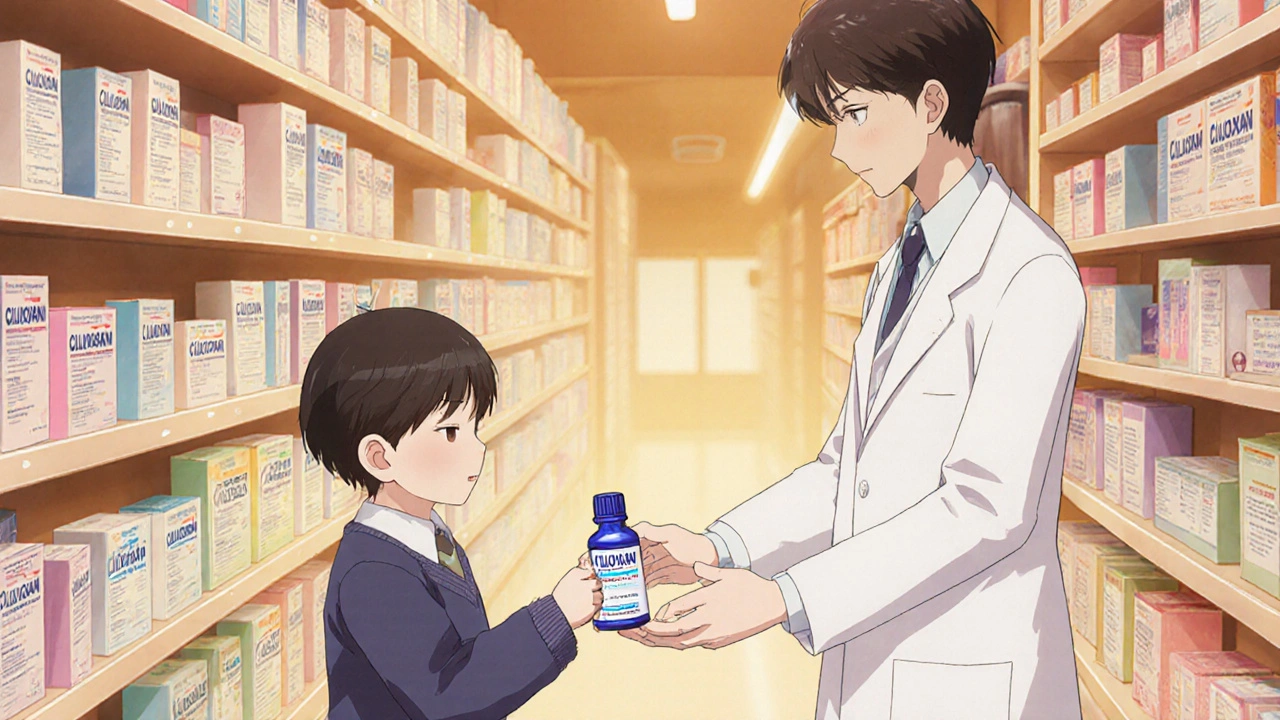Eye Drop Selection Tool
Which Eye Drop Is Right for You?
Based on the article comparing Ciloxan and alternatives, answer these 5 questions to find your best option.
When you’re dealing with a nasty eye infection, picking the right drop can feel like a gamble. Ciloxan Ophthalmic Solution is a ciprofloxacin‑based eye drop that’s been a go‑to for bacterial conjunctivitis and keratitis for years. But the market is crowded with newer fluoro‑quinolones, macrolides, and aminoglycosides, all promising faster relief or broader coverage. This guide walks you through the most common alternatives, breaks down what actually matters-spectrum, dosing, cost, and safety-and gives you a handy side‑by‑side table so you can decide without scrolling through endless product sheets.
Why you should compare eye‑drop antibiotics
Not every bacterial eye infection is the same. Some strains resist older drugs, while others are perfectly treatable with a first‑line agent like ciprofloxacin. Choosing blindly can lead to delayed healing, resistance, or unnecessary expense. By comparing key attributes, you can match the drug to the infection’s likely culprit and your own tolerance for side effects.
How we measured the alternatives
- Spectrum of activity: Which bacteria does the drug cover?
- Dosage & frequency: How many drops per day and for how long?
- Formulation details: Concentration, preservative presence, pH.
- Safety profile: Common ocular irritation, systemic absorption concerns.
- Cost & availability: Approximate retail price in Australia (2025) and whether it’s prescription‑only.
Top alternatives to Ciloxan
Below are the most frequently prescribed eye‑drop antibiotics that compete with Ciloxan. Each one has its own niche, and the best pick depends on the infection type, patient age, and any drug allergies.
| Drug (Active Ingredient) | Concentration | Key Bacterial Coverage | Typical Regimen | Cost (AUD) | Notes |
|---|---|---|---|---|---|
| Ciloxan (Ciprofloxacin Hydrochloride) | 0.3% | Gram‑negative & gram‑positive, including Pseudomonas | 1 drop q.i.d. for 7‑10 days | ~$30 (30 ml) | Well‑studied, occasional mild stinging |
| Vigamox (Moxifloxacin) | 0.5% | Broad, strong against resistant strains | 1 drop b.i.d. for 5‑7 days | ~$45 (5 ml) | Higher cost, less preservative irritation |
| Floxin (Ofloxacin) | 0.3% | Similar to ciprofloxacin, good for Pseudomonas | 1 drop q.i.d. for 7 days | ~$28 (5 ml) | Effective, but formulary restrictions sometimes apply |
| Tobrex (Tobramycin) | 0.3% | Aminoglycoside; strong on gram‑negative, limited gram‑positive | 1 drop q.i.d. for 7‑10 days | ~$25 (5 ml) | Can cause corneal toxicity if overused |
| Azithromycin Ophthalmic | 1% | Gram‑positive, atypical organisms | 1 drop q.d. for 5 days | ~$55 (5 ml) | Long‑acting, cheap on dosing but pricey per bottle |
| Erythromycin Ophthalmic | 0.5% | Gram‑positive, useful for chlamydial conjunctivitis | 1 drop q.i.d. for 7‑10 days | ~$22 (5 ml) | Older formulation, can cause temporary blurred vision |
| Polysporin Ophthalmic (Polymyxin B/Neomycin) | 0.25%/0.1% | Broad, but not strong on Pseudomonas | 1 drop q.i.d. for 5‑7 days | ~$20 (5 ml) | Combination can raise allergy risk |
| Chloramphenicol Ophthalmic | 0.5% | Gram‑positive, some gram‑negative | 1 drop q.i.d. for 7 days | ~$18 (5 ml) | Rare systemic toxicity; limited in Australia |
Deep dive: When does Ciloxan still win?
Even with newer fluoro‑quinolones on the shelf, Ciloxan holds a few advantages that keep it in the doctor’s toolbox.
- Proven efficacy against Pseudomonas aeruginosa-a notorious cause of contact‑lens‑related keratitis.
- Cost‑effectiveness. At roughly $30 for a 30 ml bottle, it’s cheaper than most 0.5% fluoro‑quinolones.
- Wide availability. Australian pharmacies stock it under both brand and generic names.
If you have a simple bacterial conjunctivitis and no resistance concerns, Ciloxan remains a solid first‑line choice.
When to reach for a different drop
Here are common scenarios where an alternative may be smarter.
- Suspected resistant organism: If a patient has failed a course of ciprofloxacin or lives in a region with high fluoro‑quinolone resistance, switch to moxifloxacin (Vigamox) which retains activity against many resistant strains.
- Allergy to fluoro‑quinolones: Some patients experience tendon‑related side effects systemically; an aminoglycoside like tobramycin or a macrolide like azithromycin can sidestep that risk.
- Contact‑lens wearers: Polysporin’s combination isn’t ideal; a single‑agent fluoro‑quinolone reduces irritation and has proven prophylactic use.
- Convenience of dosing: Azithromycin’s once‑daily schedule can improve compliance, especially for kids.
Safety tips and common side effects
All ophthalmic antibiotics can cause a transient burning sensation or mild redness. Here’s what to watch for:
- Ciloxan: Stinging on first use; rare hypersensitivity.
- Vigamox: Less preservative irritation, but higher cost.
- Tobramycin: Potential corneal epithelial toxicity if used >10 days.
- Azithromycin: Temporary blurred vision; mild eyelid swelling.
Never use any eye drop past its expiration date, and avoid touching the tip to the eye or surrounding skin to keep contamination out.

Quick checklist before you order
- Identify the infection type (conjunctivitis vs keratitis).
- Check for known drug allergies, especially to fluoro‑quinolones or aminoglycosides.
- Consider cost and insurance coverage.
- Verify dosing schedule fits the patient’s lifestyle.
- Confirm the chosen drop is stocked locally or can be mailed safely.
Bottom line: Tailor the drop to the patient
There’s no one‑size‑fits‑all answer. If you need a budget‑friendly, well‑tolerated option for typical bacterial conjunctivitis, Ciloxan comparison points to Ciprofloxacin as a reliable pick. For tougher cases, resistant strains, or patients who can’t handle the dosing frequency, alternatives like moxifloxacin, azithromycin, or tobramycin take the lead.
Frequently Asked Questions
Can I use Ciloxan for viral conjunctivitis?
No. Ciloxan targets bacteria. Viral infections need supportive care or antiviral meds; using an antibiotic won’t speed recovery and may cause irritation.
Is there a risk of antibiotic resistance with eye drops?
Yes, especially with repeated or incomplete courses. Always finish the prescribed length and avoid using the drops for non‑infectious eye irritation.
Can I use the same drop for both eyes?
If the infection is bilateral, you can treat both eyes, but you must use a fresh drop each time to prevent cross‑contamination.
How long does it take for symptoms to improve?
Most patients notice less redness and discharge within 24‑48 hours. Full resolution usually takes 5‑7 days.
Are any of these drops safe for children?
Ciprofloxacin (Ciloxan) and ofloxacin are approved for use in children over 1 month. Azithromycin can be used in infants as young as 6 months. Always follow pediatric dosing instructions.

